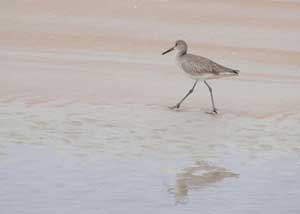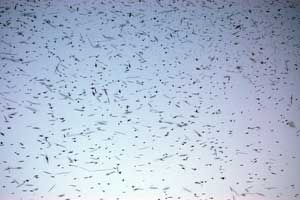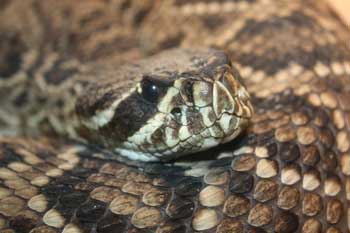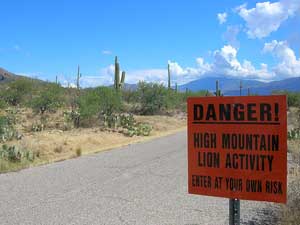
Source: Grand Canyon NP-Arizona-USA, Tobias Alt, Wikimedia

Source: Birds-1296, GamWeb, Wikimedia
Imagine you are browsing in an online bookstore and come across the title The Great Outdoors: Amazing Photographs from the Wild. You can probably predict what sort of photographs you will find in this book. Maybe you will find images of a sunset veiling the Grand Canyon or a shore bird’s reflection sailing glassy water along a beach or a butterfly exploring a milkweed flower. You get the idea. These are pictures of nature’s beauty. They are what we might see on calendars or computer screen savers.

Source: sky day 150, Maureen_sill, Flickr
What if, however, The Great Outdoors contains these images: a cloud of mosquitoes, a swarm of wasps, and a pit of rattlesnakes? This is a different view of the great outdoors.
What if experiencing the great outdoors means being alone and lost in a place with no cities, no roads, no houses, no people, and no food? What if you also have no good shoes and only a few matches? To make matters worse, what if you have a sprained ankle, and wolves are eyeing you as they circle closer. How “great” is this outdoors?
This vision of the outdoors is “great” in a different way that’s powerful, strong, formidable, uncontrollable, and dreadful. This is a greatness of nature that makes human beings feel smaller and puts us in our place.

Source: Eastern Diamondback Rattlesnake by Trisha, Ltshears, Wikimedia
The texts you will read in this lesson show the great outdoors in this second sense and are different from the viewpoint you’d get from the “amazing photographs” book illustrating nature’s beauty. Yet the two texts you will read are also very different from each other. The authors of the texts share a view of nature that is both realistic and reverential, but their images vary greatly in dramatic force and purpose.
Reading texts like these that contain different ideas about the same theme or topic allows you to see different perspectives on what the world is like and how some aspects of life might work. Reading two texts by authors who see life differently and show different viewpoints of the world can also open your mind to new experiences. In fact, reading one text after deeply reading another text may cause you to think about how the second text relates to the first. How reading one text relates to reading another text is called intertextuality. This kind of reading can lead you to see life and the world in a third way—your way.

Source: Saguaro National Park1, Grombo, Wikimedia
Although you read intertextually all the time (whether you choose to or not), the richness that such reading brings is greatly increased when you are aware of how it connects to other texts. Imagine the power you can add to your reading by looking at how texts are similar and how they are different. Doing this involves consciously allowing a conversation to occur between what you are reading now and what you have read before that connects to the present text.
In this lesson, you will read and annotate a pair of texts to make inferences, draw conclusions, and synthesize ideas and details using textual evidence. Prepare to see nature presented in two different ways in the texts you will be reading and to get involved in a conversation with these texts.